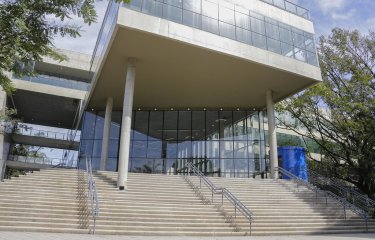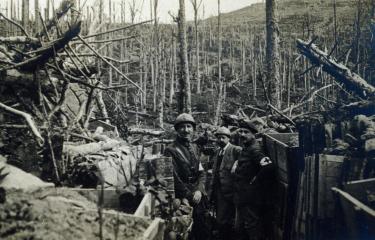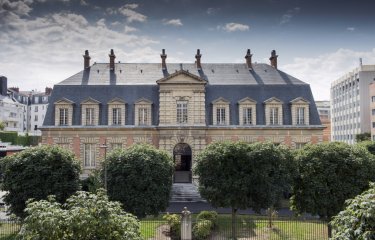On September 13, 2018, the Institut Pasteur inaugurated its "Omics" buildings, which will serve to explore the myriad possibilities offered by the development of computational biology. The buildings will house scientists from a wide range of disciplines together with state-of-the-art technologies.
The OMICS Center inauguration ceremony was attended by Christian Vigouroux and Stewart Cole, respectively the Institut Pasteur Board of Directors’ Chairman and President, Erik Orsenna, the Institut Pasteur ambassador, François Romaneix, Senior Executive Vice-President Administration and Finance, and Olivier Schwartz, Scientific Director. The Institut Pasteur researchers who will work in the new buildings – Marc Eloit, Vincent Enouf, Olivier Gascuel and Marc Monot – were also present.
The new buildings are named after two key figures in the Institut Pasteur's history, Simone Veil and Alexandre Yersin, represented by their descendants at the ceremony, Jean and Pierre-François Veil (Simone Veil’s sons), and Geneviève Minssen (Alexandre Yersin’s great niece). The occasion was also marked by a tribute to Doctor and Mrs Gillot, who also attended the ceremony, and whose generous donation helped to support the construction of the new research facility. And lastly, the artist ORLAN was there to present her work "Les Phages d’ORLAN" (ORLAN’s phages), which adorns the communal space between the Omics buildings with a multitude of vibrant colors and exemplifies her keen interest in the relationship between art and science, and more particularly, art and biomedical research.
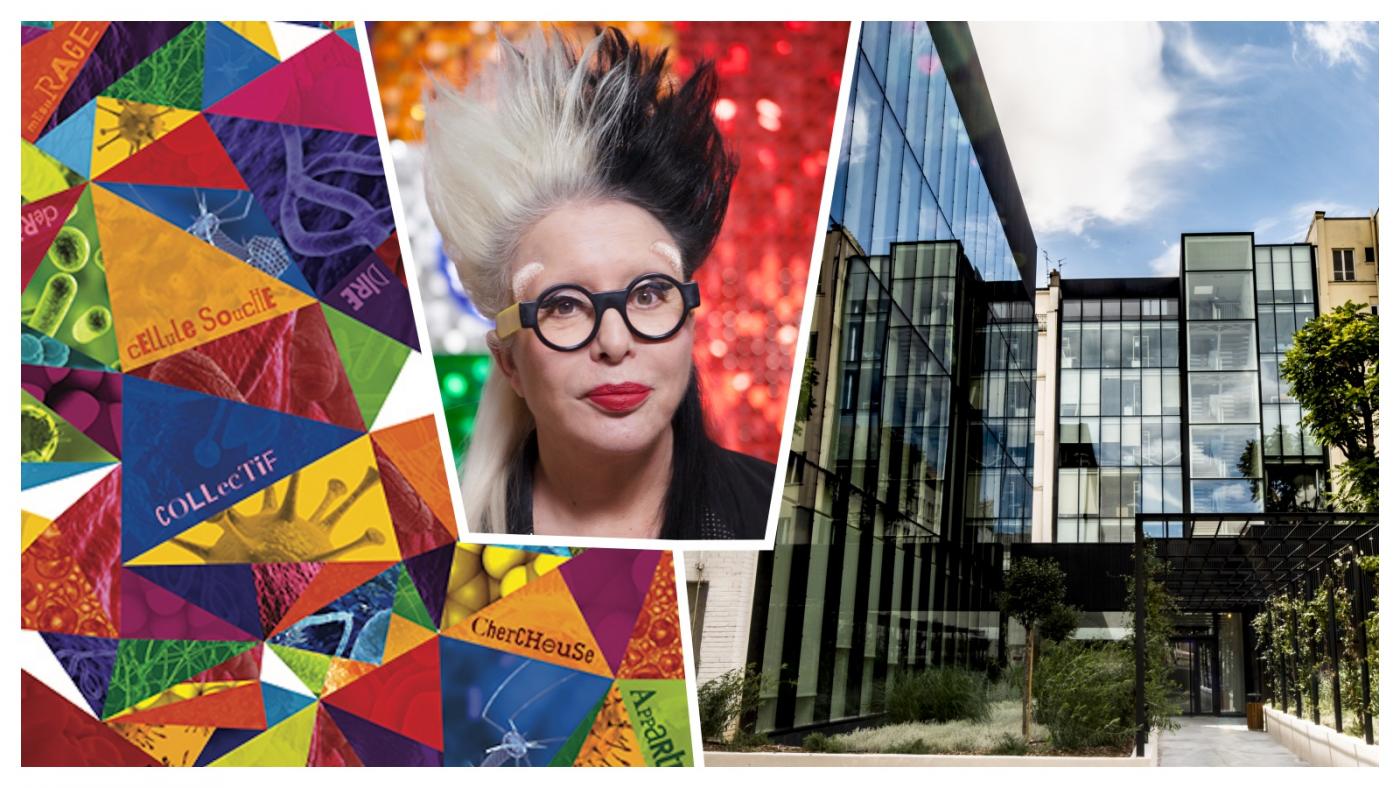
Omics and big data take pride of place at the Institut Pasteur
The Omics buildings form a center of expertise, unique in France, that consolidates the Institut Pasteur's position as a global player with the capability of generating and analyzing big health data and extracting the knowledge needed to advance our understanding of the living world and improve healthcare. The Institut Pasteur, a pioneer of this revolution, has created a single structure that brings together expertise in a wide range of fields that can be applied to healthcare, including biology, computer science, mathematics, statistics, physics and social sciences. This "Omics" facility has two buildings which will focus on two main areas of expertise: sequencing and bioinformatics.
- The Simone Veil building houses the Biomics Pole, whose mission is to provide expert sequencing services for the scientific community.
- The Alexandre Yersin building houses the Center of Bioinformatics, Biostatistics and Integrative Biology (C3BI). The C3BI is a multidisciplinary, cross-functional structure for large-scale data analysis at the Institut Pasteur. Its activities include facilitating cooperation and dialog on bioinformatics issues and performing methodological research in the areas of information science and statistics.
Flagship projects in this new multidisciplinary era will analyze the spread of disease outbreaks, examine the evolution of microbes and viruses and their resistance to treatment, and investigate human genomics data to shed light on the factors that predispose some individuals to disease.
Funds of more than €9 million were needed to build and equip the Omics buildings (which cover a surface area of 2,865m2). This sum, a major investment commensurate with the Institut Pasteur's ambitions, was raised entirely by public generosity.
Big Data in Health – a little context
When biologists first suggested the idea of sequencing the entire human genome in 1985, it seemed like a monumental undertaking. It was thought that it would take thirty years to read all the information contained in the 46 chromosomes – which are made up of 3.2 billion nucleotides. At the time, methods for reading DNA were in their early infancy. But despite the apparent obstacles, an international consortium of six countries, including France, embarked on the task in 1990. In 2001, they released a sequence of virtually all the human genome. The total cost of the project was in the region of $3 billion. Today, using new high-throughput sequencing techniques, we can sequence the genome of any person in just a few hours for less than €1,000. The current sequencing output stands at around 60 billion nucleotides per day.
The ability to generate huge volumes of data in the field of life sciences is revolutionizing our approach to biology. This is what we mean when we talk about "big data" (read the report How big data is revolutionizing health research). Mathematical modeling and advanced statistics and computing techniques have become vital in managing and analyzing the reams of data generated.
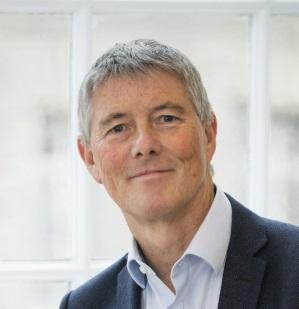
Stewart Cole, President of the Institut Pasteur
The Institut Pasteur has always tried to adapt its organizational setup to reflect new developments, enabling it to recruit the experts needed to tackle the ever-shifting challenges raised by diseases that represent a threat to human health. This multidisciplinary center is a cornerstone of our research capability, equipping us to tackle the challenges of both fundamental research and public health. We are very proud to launch a new digital era at the Institut Pasteur with this new facility, funded by public generosity.
The two buildings are named after two key figures in the Institut Pasteur's history
- Simone Veil (1927-2017), the Institut Pasteur's "white knight"
On June 12, 1975, Simone Veil, then French Minister of Health and Family, held a meeting with Jacques Monod, President of the Institut Pasteur, and Jean Royer, Chairman of the Board of Directors, to inform them that the government would be increasing its grant to the Institut Pasteur from 20 to 50.5 million francs. This government grant – a huge amount of money at the time – was urgently needed to help the Institut Pasteur overcome the major financial crisis it had been grappling with for several years.
The Institut Pasteur pays tribute to Simone Veil
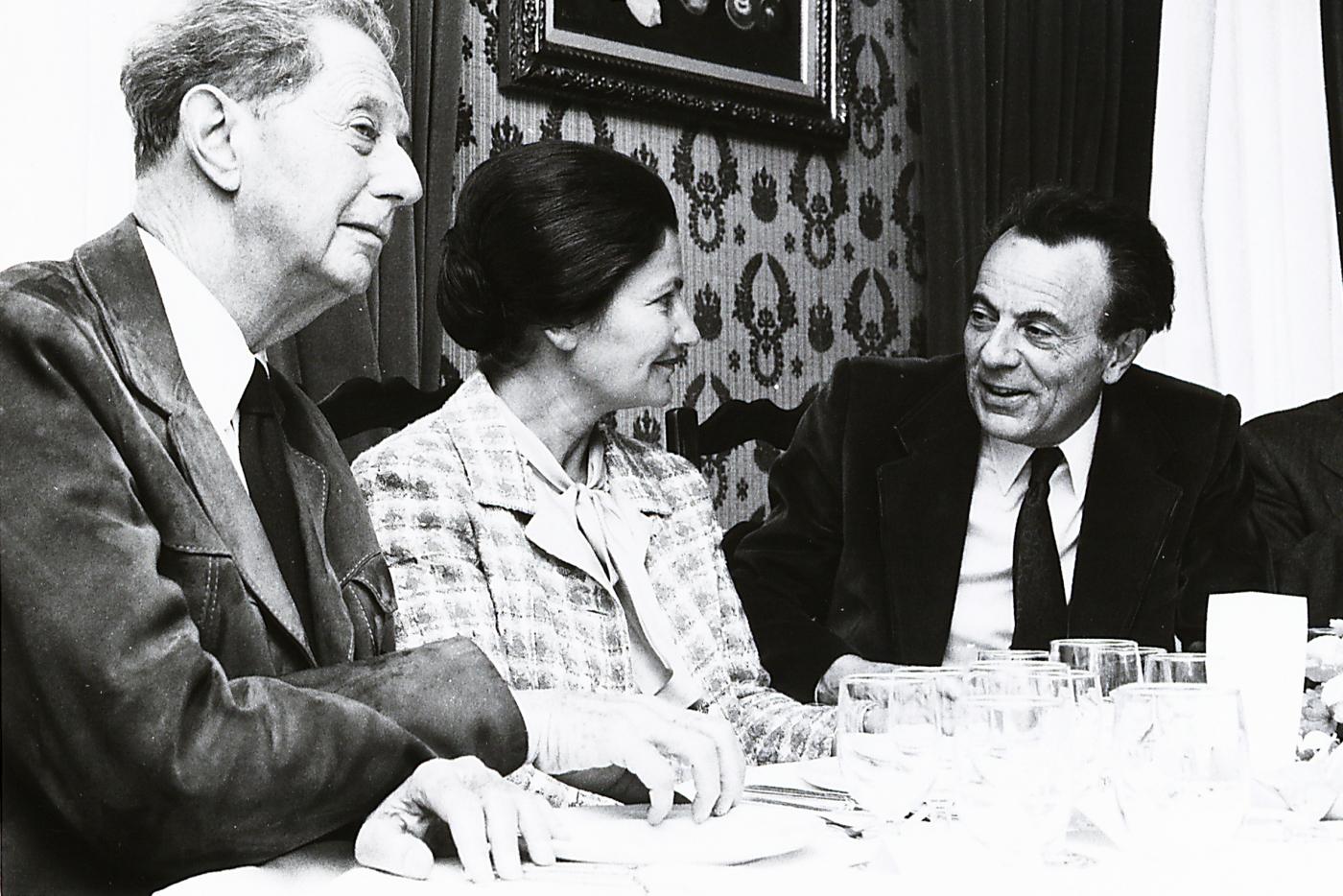
- Alexandre Yersin (1863-1943), who discovered the bacterium responsible for plague
Swiss-born Alexandre Yersin joined the Institut Pasteur in 1885 aged just 22 and worked under Émile Roux. He discovered the plague bacillus in Hong Kong. A brilliant scientist, he was also an explorer and pioneer in many fields. Alexandre Yersin was buried in Nha Trang (Vietnam) and next to his grave there is a small temple that is always decorated with flowers and incense – a great honor for a foreign national.
Read Alexandre Yersin portrait
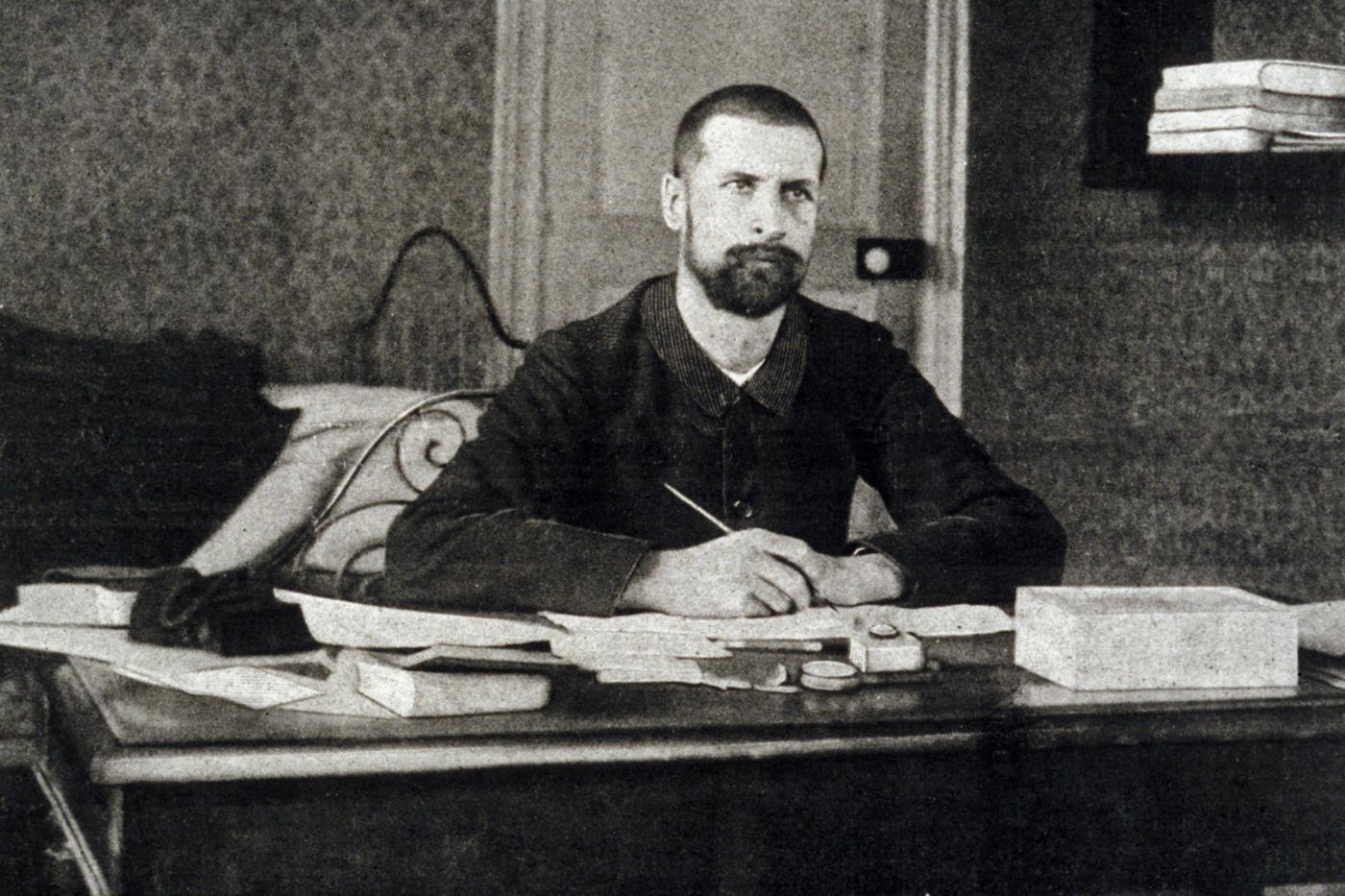

With its new "Omics" buildings, the Institut Pasteur
continues its digital revolution



